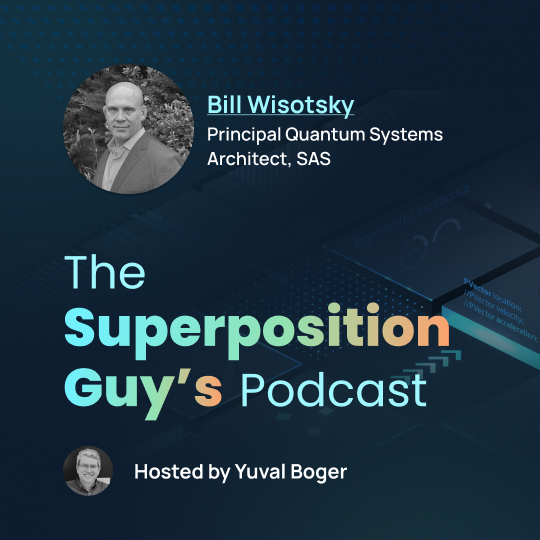Insider Brief:
- Scientists from Rice University and the Max Planck Institute for Quantum Optics introduced a theoretical framework for paraparticles, entities governed by parastatistics that do not fit the traditional fermion-boson classification.
- The study demonstrates paraparticles emerging as quasiparticle excitations in specific quantum spin models, offering unique thermodynamic properties and generalized exclusion principles that expand our understanding of particle physics.
- Researchers highlight the potential of paraparticles to improve quantum error correction, addressing the fragility of quantum states in noisy environments and advancing quantum computing reliability.
- While the research provides a strong theoretical foundation, experimental confirmation of paraparticles remains a key challenge, with future investigations focusing on condensed matter systems, topological materials, and Rydberg atom setups.
Until just a few days ago, despite the complexity of particle physics, one could take solace in the apparent simplicity of physical law that seemed to suggest particles could be divided into one of two categories: bosons and fermions. Of course, there is the anyon which is relevant to this discussion yet existing as an exception rather than the rule, a nuance that is reserved for alternate times and places. But physics reminds us–or rather, torments us–with subtle disruptions that continuously challenge seemingly-final notions of physical law. Such is the discovery of the existence of paraparticles, entities that do not fit the fermion-boson classification.
In a recent study published in Nature, scientists from Rice University and the Max Planck Institute for Quantum Optics presented the mathematics behind the existence of paraparticles. This discovery has the potential to not only illuminate our understanding of the physical world but could also prove useful in developing error-free quantum computers, according to a follow-up article from Nature.
Revisiting the Pauli Exclusion Principle
The emergence of paraparticles invites us to revisit foundational concepts in quantum mechanics, beginning with Wolfgang Pauli’s contribution to the field: the Pauli Exclusion Principle. The Pauli Exclusion Principle states that within a quantum system, no two fermions—such as electrons, protons, or neutrons—can occupy the same quantum state. These states are defined by attributes like angular momentum, spin, and energy.

For example, consider the electron and the four quantum numbers that determine its state: the principal quantum number (energy level), the orbital angular momentum (shape of the orbital), the magnetic quantum number (orbital orientation), and the spin direction. The principle dictates that while two electrons may share the same orbital, they must have opposite spins. This fundamental rule not only explains why electrons occupy different energy levels as they are added to an atom, but is also central to our understanding of the periodic table and the electronic properties of materials.
Bosons, by contrast, are not bound by the exclusion principle. Instead, they can occupy the same quantum state, leading to phenomena like Bose-Einstein condensates—states of matter where particles coalesce into a single quantum state and exhibit macroscopic quantum behavior.
Paraparticles challenge these familiar categories, introducing generalized exclusion statistics and new behaviors. Their properties not only expand our understanding of particle physics but also hold potential applications in quantum computing, particularly in error correction.
Paraparticles, Parastatistics, and Other Challenges
This study, published in Nature, challenges the traditional dichotomy of particle exchange statistics, which classifies particles as either fermions or bosons. Researchers from Rice University and the Max Planck Institute for Quantum Optics introduced a theoretical framework for paraparticles—entities governed by parastatistics. Unlike anyons, which exist in two-dimensional systems, paraparticles can theoretically emerge in higher dimensions. They demonstrated that these paraparticles could emerge as quasiparticle excitations in specific quantum spin models leading to new thermodynamic properties and generalized exclusion principles.
The study constructed solvable one- and two-dimensional quantum spin models where paraparticles manifest, revealing unique exchange statistics that are physically distinct from fermions and bosons. Notably, the researchers identified a potential for paraparticles to serve as a new class of quasiparticles in condensed matter systems, with applications in studying exotic phases of matter and potential implications for quantum technologies.
While the results provide a strong theoretical basis for paraparticles, it’s important to note that the study is primarily theoretical, and the physical existence of paraparticles has yet to be experimentally verified. The authors acknowledge the need for experimental confirmation, particularly through advanced condensed matter systems or quantum spin models. Additionally, the work focuses on free paraparticle systems and leaves open questions regarding interactions and their impact on observable phenomena.
Future research is likely to explore the emergence of paraparticles in experimental settings, such as Rydberg atom systems or topological materials. Researchers may also investigate whether paraparticles can exist as elementary particles, a speculative but nevertheless interesting possibility that could provide further insights into particle physics.
The Intersection of Paraparticles and Quantum Technology
One of the implications of paraparticles cited by Nature lies in their potential to improve quantum error correction. Error correction is highly relevant for reliable quantum operations, addressing the fragility of quantum states in the presence of noise or decoherence. Paraparticles, with their unique exclusion statistics, could lead to new error-correction techniques.
Interestingly, quantum computers themselves may serve as the platform for creating or observing paraparticles, illustrating a complementary relationship between these theoretical entities and the tools of their potential discovery.
Ever-Evolving Quantum Physics
As experimental techniques advance, researchers may soon confirm the existence of paraparticles in condensed matter systems or observe their effects in quantum spin models. Their unique behaviors, from generalized exclusion principles to exotic exchange statistics, could open new doors in quantum mechanics, materials science, and beyond.
While discussions of timelines for viable quantum computers continue to dominate online discourse—sparked recently by comments from NVIDIA’s Jensen Huang—the quiet but persistent progression of physics unfolds in the background. It serves as a reminder that the journey toward quantum computing, much like the chaotic systems it seeks to model, is unpredictable. The study serves as a reminder that the paradigms we construct to visualize the world are often temporary frameworks, subject to refinement or collapse through the slow drip of discovery.
Contirbuting authors on the study include Zhiyuan Wang and Kaden R. A. Hazzard.
















